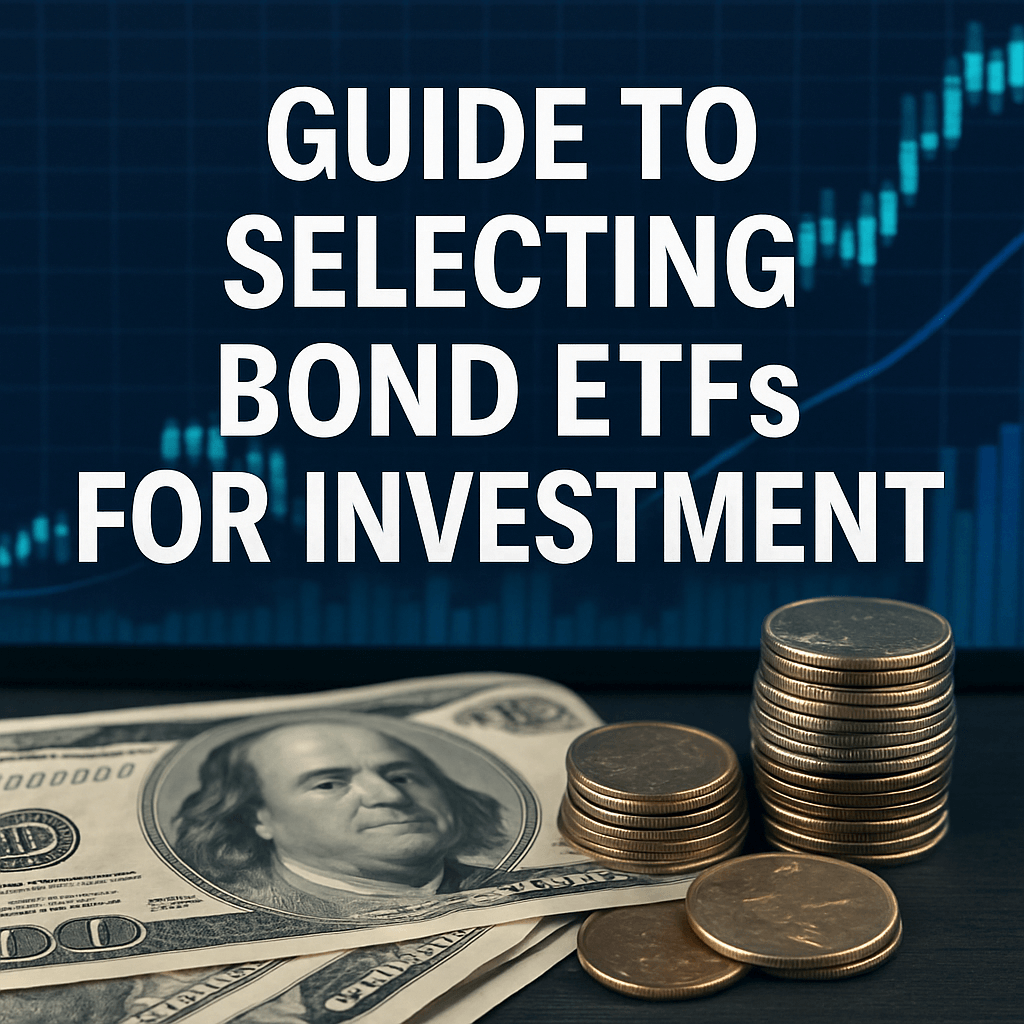Guide to Selecting Bond ETFs for Investment

Choosing a bond ETF is an essential strategy for portfolio diversification, especially after securing a global equities ETF. In investment strategies, bonds serve as a defensive mechanism while equities attempt to secure growth. As the balance between risk and reward is critical in investing, incorporating a bond ETF into your portfolio can significantly enhance its stability.
This guide aims to navigate the complexities of the vast bond market and assist you in identifying the bond ETF that best aligns with your financial goals.
Understanding Bond ETFs
Bond ETFs (Exchange-Traded Funds) invest in a diversified portfolio of bonds, allowing investors to gain exposure to fixed-income securities without needing to purchase individual bonds. The bond market, valued at over $128 trillion globally, is complex and subdivided into various categories such as government bonds, corporate bonds, municipal bonds, and high-yield (junk) bonds.
Benefits of Including-Bond ETFs in Your Portfolio
- Diversification: Bond ETFs spread risk across various bonds, reducing the impact of any single bond’s performance.
- Liquidity: ETFs can be bought and sold easily on stock exchanges, providing liquidity that some fixed-income securities lack.
- Cost-Effectiveness: Bond ETFs typically have lower fees compared to actively managed bond mutual funds due to their passive management style.
Focusing Your Bond ETF Selections
The first step in selecting an appropriate bond ETF is understanding its role in your portfolio. Given that most investors tend to have a higher allocation toward equities, it’s prudent to prioritize bond assets that are likely to perform well when the stock market is under pressure. The category that most effectively stabilizes your portfolio is high-quality government bonds.
High-quality refers to bonds issued by governments of developed nations that are rated investment-grade or higher. These bonds are perceived as low risk because they are backed by the economic stability of their respective countries, which are less likely to default compared to corporations.
During economic downturns, investors often gravitate towards government bonds as a safe haven. This ‘flight-to-quality’ phenomenon can lead to rising bond prices, providing necessary cushioning to offset equity losses.
Criteria for Choosing High-Quality Government Bond ETFs
A European investor, for example, should consider a Euro-denominated government bond ETF. This choice mitigates currency risk, adding unwanted volatility to an otherwise stable component of your portfolio. It is recommended that investors focus on Eurozone ETFs, which are diversified across various European countries, thereby providing additional safety.
Understanding Bond ETF Maturity
Bond maturity refers to the length of time until a bond’s principal is repaid. A bond’s maturity acts similarly to a fixed-rate savings account: longer maturity bonds tend to offer higher yields as compensation for increased risk. As a fundamental rule, longer maturity bonds are generally riskier than shorter ones.
Maturity Categories:
- Short-Term Bonds (0-5 years): Typically exhibit low price volatility and less susceptibility to inflation.
- Intermediate Bonds (5-10 years): Offer a balance of equity diversification and inflation exposure, along with moderate volatility.
- Long-Term Bonds (10+ years): While they potentially provide higher returns, they can be highly sensitive to interest rate fluctuations.
The Bond Risk-Reward Spectrum
Different bond maturities have distinct risk-reward profiles, especially during economic downturns. For instance, during the 2020 Global Financial Crisis, short-term bond ETFs gained only modestly, while intermediate bonds provided more robust returns. This signifies that an intermediate bond ETF can be particularly beneficial for those willing to accept some volatility in exchange for increased returns.
Conversely, long-duration bonds often underperform during periods of rising interest rates, making careful evaluation essential.
Analyzing Recent Market Trends
The recent conditions of the fixed-income market in 2022 and 2023 underlined these volatility concerns. Inflation rates rose significantly, leading to a decline in the performance of long-term bonds. A comparative analysis showed that the short bond ETF registered a minimal loss of -2.3%, whereas long-dated bonds plummeted by -34% as investors fled to safety amidst inflation fears.
Choosing the Right Bond ETF
Given your investment goals, selecting the appropriate ETF from the numerous options available can be streamlined using flexibility tools, such as an ETF Screener. This resource allows you to analyze ETFs based on specific criteria, including asset class, region, bond types (government, corporate, etc.), and maturity.
Consider factors like expense ratios, historical performance under varying market conditions, and liquidity when executing your search.
Alternative Options for Bond ETFs
If you seek to diversify further, there are options like global government bond ETFs, which include bonds from various countries, or aggregate bond ETFs, which mix government and corporate bonds. While these can improve returns, they may also introduce additional risk, especially during economic downturns.
Conclusion
Having explored the intricacies of selecting a bond ETF, you are now equipped with the knowledge to make informed investment decisions. Starting with a short Euro government bond ETF is suitable for new investors seeking stability. As your experience evolves, you can always adjust your strategy by exploring a blend of intermediate and inflation-linked bonds to enhance your portfolio’s defense.
Your efforts to diversify, utilizing high-quality government bond ETFs, represent a fundamental step in establishing a resilient investment strategy.